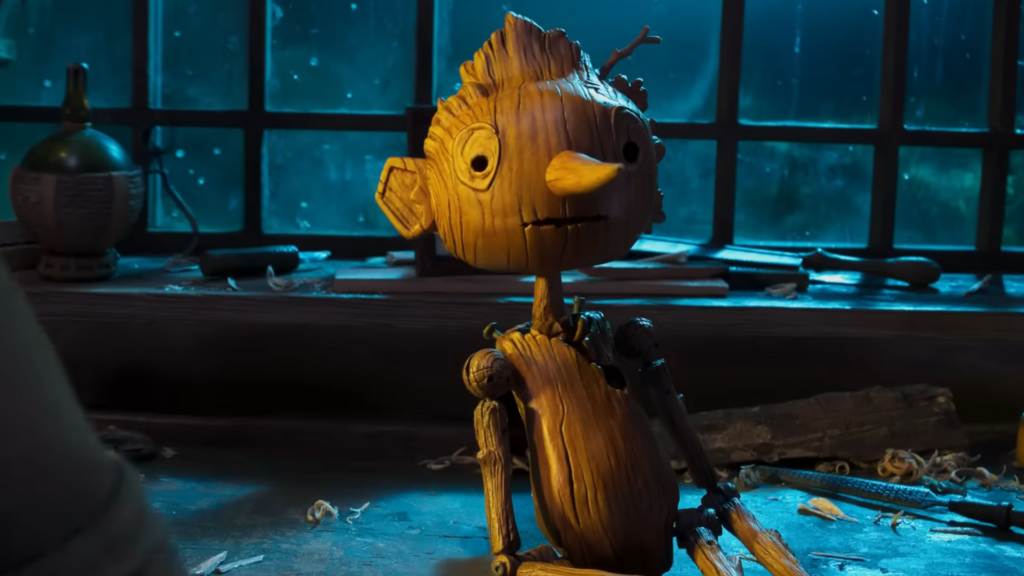How the master of macabre became a master of puppets

Note: This text might contain spoilers of the plot.
Note: This text might contain spoilers
One could be skeptical about another adaptation of Pinocchio being made. A remake of such a legendary story, this time by Guillermo del Toro, associated mainly with horror, could turn out to be either breathtaking or just unbearably grotesque. What’s the verdict?
The first thing the viewer notices is the craft of the stop-motion animation used. And the very choice of this technique is the first of many del Toro’s winks at a movie’s audience. How ironic, even grim, a story about a puppet-turned-boy would seem, told using puppets created and moved by others, right? After watching the full movie – not exactly.
Paradoxically, Pinocchio is the last to be a puppet due to his disobedience, curiosity and his bubbly personality. He is the one following his feelings here, he is the one who questions the status quo. He’s causing quite a stir in the small Italian town, whose inhabitants find holiness in a wooden crucifix and devilry in Pinocchio, incidentally, both carved by the same hands.
Time and place are very important in del Toro’s narrative. At the beginning, immersing ourselves in the story of Geppetto and Carl, we see war, with its destructive and senseless face. Since that moment the whole story is wrapped in grief. Then, when Pinoccio is brought to life, we witness the rise of Benito Mussolini and the fascism consuming Italy. Is that new concept just a controversy needed to hype the media buzz? Has this dark period in world history been used to gain attention and please critics?
Let’s be real — It’s a smart move, and it will pay off. However, I don’t see it as a calculation as long as it serves and enriches the story. How? To quote Guillermo del Toro: “The virtue Pinocchio has is to disobey. At a time when everybody else behaves as a puppet — he doesn’t.”
And indeed, puppet-like behaviour is a leading motive in the story — Nazis, sick youth organizations, even circus performances adapted to the dictates of the authorities. Adults and children thrown into frames with no way out. That’s a very fresh look at Carlo Collodi’s piece. With all the new concepts and characters created just for this Netflix movie, strangely, the darkness and angst of the original version of the story has been brought back, contrasting it with other, overly sweet, pointless adaptations.
The whole story is being told by Sebastian J. Cricket (voiced by Evan McGregor), a purple fellow, with a Schopenhauer portrait in his room. And although Pinocchio (voiced by Gregory Mann) is the titular character, the main one seems to be his papa Geppetto (voiced by David Bradley). He’s imperfect, harsh and thank’s to that — relatable. Guillermo del Toro and Mark Gustafson show us a man, who loses his mind, immerses himself in alcohol and, in a last act of obsession, wants to carve a wooden replacement for his deceased son. That’s a very strong and heavy background, but it allows the final punchline to sound even clearer. Finally, with all the fragility of life exposed, the viewer is left with strange peace and appreciation.
The movie is thought-provoking, grim and on-point. I need to admit, it’s by far the best adaptation of The Adventures of Pinocchio I’ve ever seen. And, to be honest, I’m not a fan of musicals.
Would it be enough for an Oscar nomination in the Animation category? Maybe it can bring Netflix a win? I bet it would!
